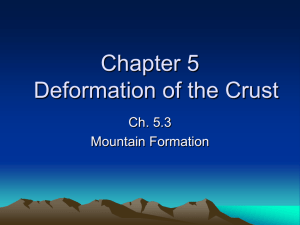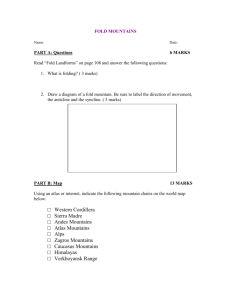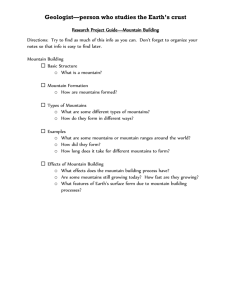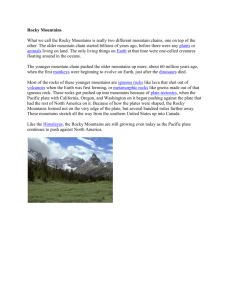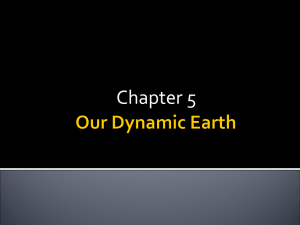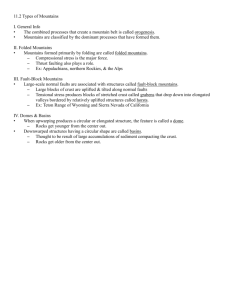11.3_fullnotes_ES
advertisement
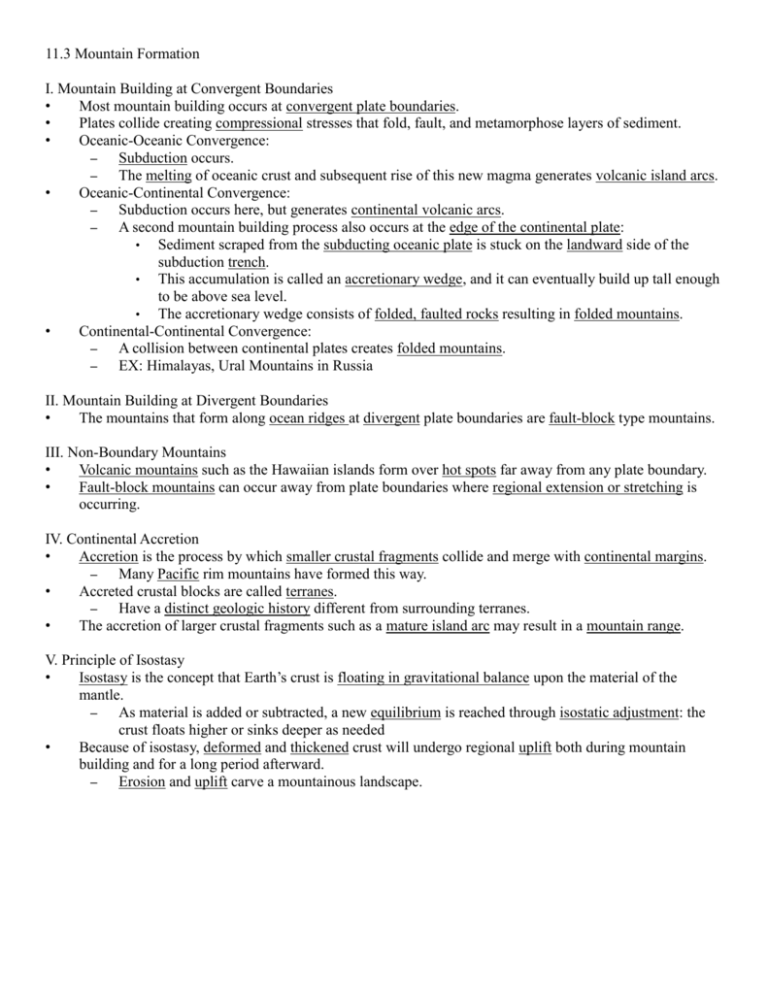
11.3 Mountain Formation I. Mountain Building at Convergent Boundaries • Most mountain building occurs at convergent plate boundaries. • Plates collide creating compressional stresses that fold, fault, and metamorphose layers of sediment. • Oceanic-Oceanic Convergence: – Subduction occurs. – The melting of oceanic crust and subsequent rise of this new magma generates volcanic island arcs. • Oceanic-Continental Convergence: – Subduction occurs here, but generates continental volcanic arcs. – A second mountain building process also occurs at the edge of the continental plate: • Sediment scraped from the subducting oceanic plate is stuck on the landward side of the subduction trench. • This accumulation is called an accretionary wedge, and it can eventually build up tall enough to be above sea level. • The accretionary wedge consists of folded, faulted rocks resulting in folded mountains. • Continental-Continental Convergence: – A collision between continental plates creates folded mountains. – EX: Himalayas, Ural Mountains in Russia II. Mountain Building at Divergent Boundaries • The mountains that form along ocean ridges at divergent plate boundaries are fault-block type mountains. III. Non-Boundary Mountains • Volcanic mountains such as the Hawaiian islands form over hot spots far away from any plate boundary. • Fault-block mountains can occur away from plate boundaries where regional extension or stretching is occurring. IV. Continental Accretion • Accretion is the process by which smaller crustal fragments collide and merge with continental margins. – Many Pacific rim mountains have formed this way. • Accreted crustal blocks are called terranes. – Have a distinct geologic history different from surrounding terranes. • The accretion of larger crustal fragments such as a mature island arc may result in a mountain range. V. Principle of Isostasy • Isostasy is the concept that Earth’s crust is floating in gravitational balance upon the material of the mantle. – As material is added or subtracted, a new equilibrium is reached through isostatic adjustment: the crust floats higher or sinks deeper as needed • Because of isostasy, deformed and thickened crust will undergo regional uplift both during mountain building and for a long period afterward. – Erosion and uplift carve a mountainous landscape.

